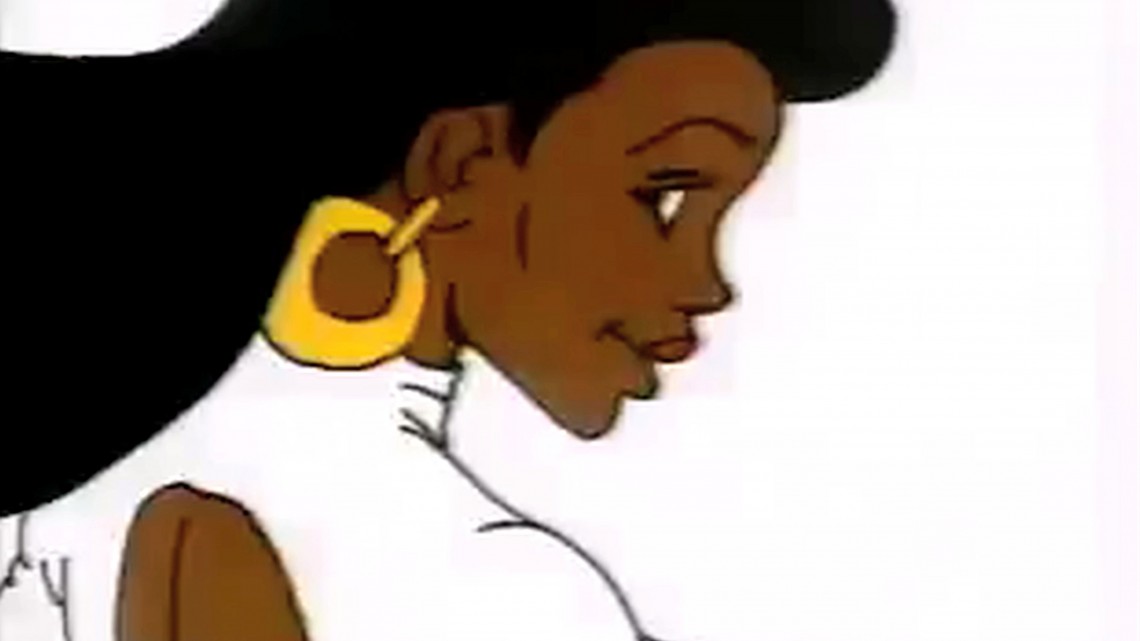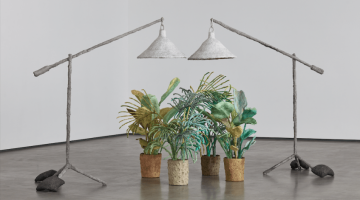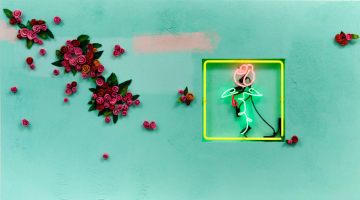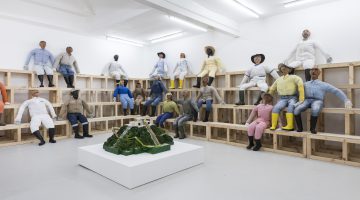Martine Syms: Black Box
Human Resources Los Angeles
410 Cottage Home, Los Angeles, CA 90012
February 6 – 27, 2016
Martine Syms latest project, Black Box (2016), situates the screen as an omnipresent poetic figure. By screen I mean quite literally the projected images from VHS tapes, the Internet/computer, self-montages, television shows, family video, advertisements, and everything else that exists in the realm of representation as a light-emitted record. Syms projects a series of 60 recordings—each running 30 seconds—onto the three walls of the Human Resources main gallery. As part of Syms’s larger project Lessons, an incomplete and continuous poem of 180 sections, Black Box posits the quotidian as an indispensable source of edification.
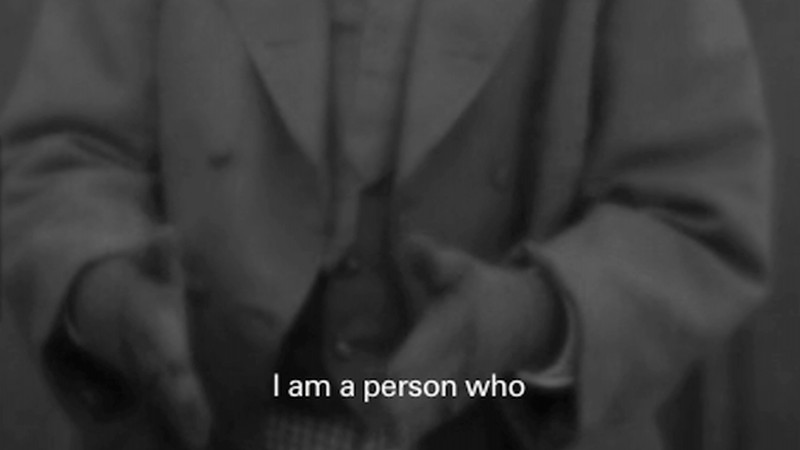
Martine Syms, still from Black Box, 2016. Video installation. Courtesy of Human Resources LA.
A massive image of the opening sequence of Oprah dominates the left screen; she walks through the streets of Chicago in the early 1990s and freezes a smile at the audience. Thirty seconds later, the screen to the right projects a black man raptured by another screen off camera. We faintly hear an announcer relaying sports plays and watch the man lean forward with exclamation cheering for what we cannot see. The video dims and the center screen lights up with a high school marching band bending down a Los Angeles street. The black man watching the sporting event appears suddenly to our right again and then a still of the words “Video is Feminine” in 1980s typeface is on the left. Filling the wall, a blurry video of the television show Girlfriends is crossed by a VHS recording of a family banquet, tables of black elders adorned in Sunday’s best, eating and drinking while looking sincerely annoyed and/or confused at the camera’s presence. This is Black Box: a series of non-linear videos and stills which function as a new narrative of lyrical structure. Syms’s work has generally been a query and contestation of propriety within art and art forms (The “Mundane Afrofuturist Manifesto” is a great example of this). With Black Box, Syms disaggregates the narrative mode of poetry by a re-assimilation of videos and stills that place blackness—as self, as representation, and as sound—and media as sources of poetic prose.
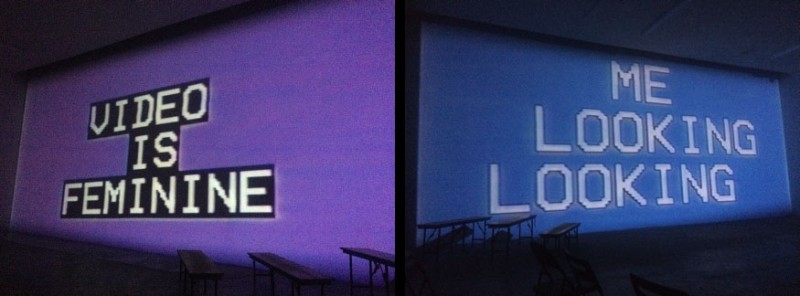
Martine Syms, Black Box, 2016. Video installation. Photo Credit: Essence Harden
Syms signifies the screen as a rapturing physicality—as her projections literally encapsulate the space and situate the audience at center, in the dark, leaning and laying on pillows and friends, not sure where to look next. Black Box, then, is a lesson in the everyday in which Sister Souljah, city lights, and the flipping hair of an animated black girl are discourses that teach.
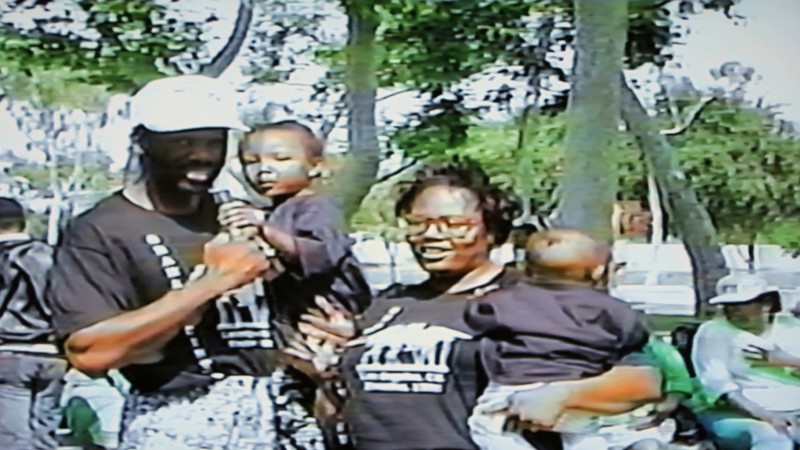
Martine Syms, still from Black Box, 2016. Video installation. Courtesy of Human Resources LA.
